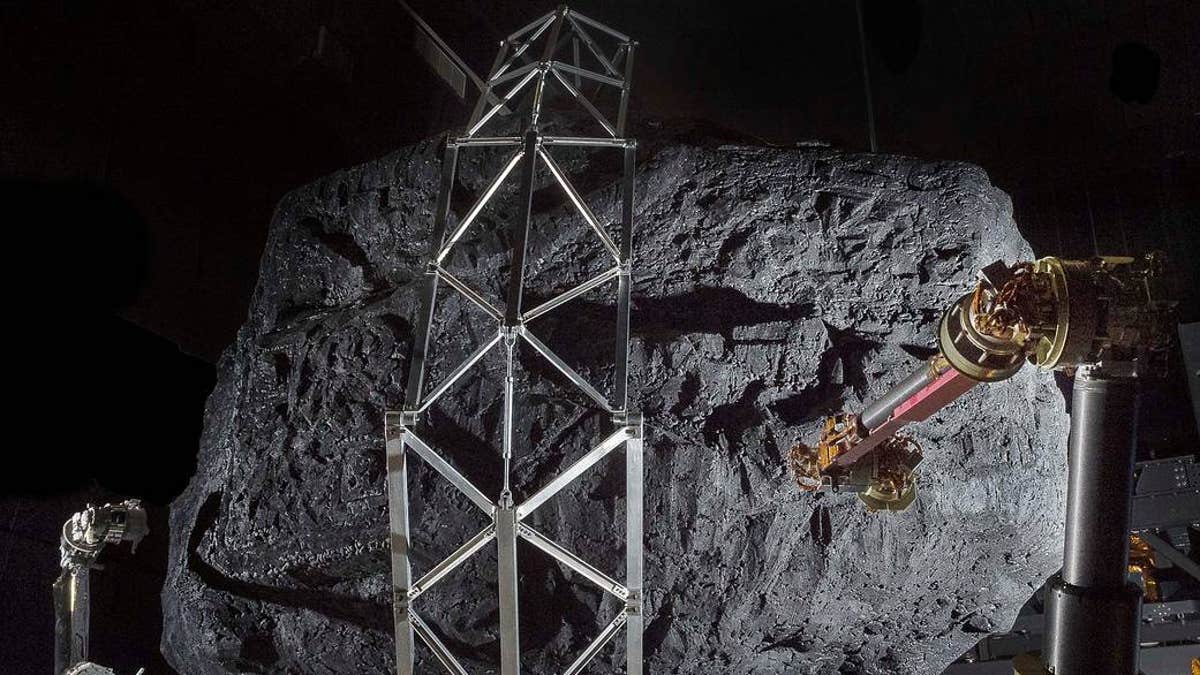
In preparation for the 2021 Asteroid Redirect Mission, this prototype of a robotic capture module system uses a mock asteroid boulder as a test at the Goddard Space Flight Center in Greenbelt, Maryland. (Credit: NASA)
NASA is set to launch the robotic portion of its Asteroid Redirect Mission (ARM) in 2021. This will be the first mission to visit and collect a multi-ton sample from a large near-Earth asteroid. The collected sample will be used in a demonstration of enhanced gravity tractor asteroid deflection.
Recently at the Robotic Operation's Center of NASA's Goddard Space Flight Center in Greenbelt, Maryland, a robotic capture module system prototype used a mock asteroid boulder to test its capabilities. [NASA's Asteroid-Capture Mission in Pictures]
NASA, along with students from West Virginia University, created the mock asteroid boulder from rock, styrofoam, plywood and an interior aluminum frame. The robotic hardware for the project includes three space frame legs with foot pads and two seven degrees of freedom arms with microspine grippers to hold on to the massive rock.
Within the ROC engineers have multiple tools — industrial robots, motion-based platforms, and customized algorithms — to aide in creating simulations of robotic spacecraft operating in space. Engineers will also have the capability to practice and perfect robotic satellite servicing operations, fine tuning systems and controllers and optimizing performance factors for future repair and refueling missions.
More From Space.com
This portion of ARM will place the recovered asteroid sample in stable orbit around the moon. Future astronauts will explore the boulder and retrieve samples for study. NASA's Asteroid Redirect Mission offers advances in technologies and spaceflight experience, bringing necessary growth for the manned Martian missions planned for the 2030s.
Original story on Space.com.
